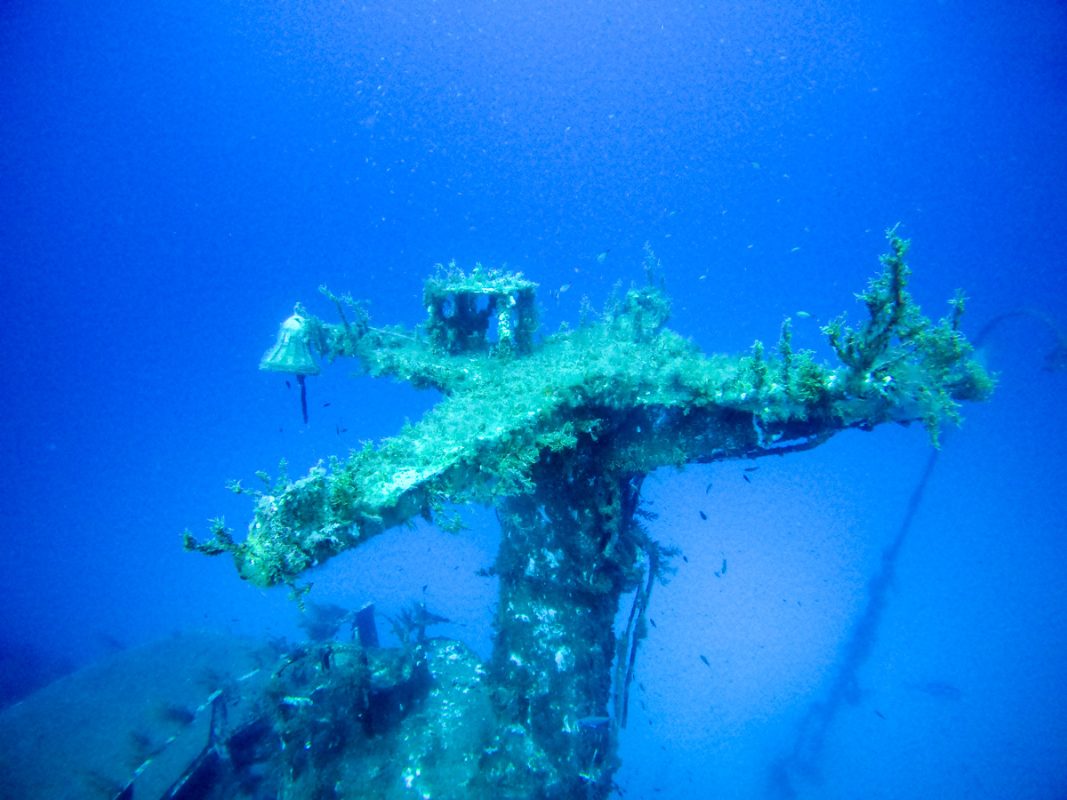Diving in Malta in April – is it too cold? On my recent trip to the Southern European island, I embarked on a day of diving to find the answer to this question!
The sun beamed down on us as we drove the 26-kilometre distance from Silema to the Cirkewwa Marine Park, one of Malta’s premier diving destinations that kicks out on a peninsula in the north of the island.
It was a mild 18°C outside, warmed up by the blue skies, but I was advised that the sea temperature would hover about the same, making it one of the cooler dives that I’d done.
“But it’s a lot warmer than when I arrived this year”, Piotr, my instructor advised. “In January, it was only 14°C!”.
Despite the waters not being warm year-round, Malta is an all-season diving destination – and I was about to test out the waters in April.
What’s diving in Malta like?
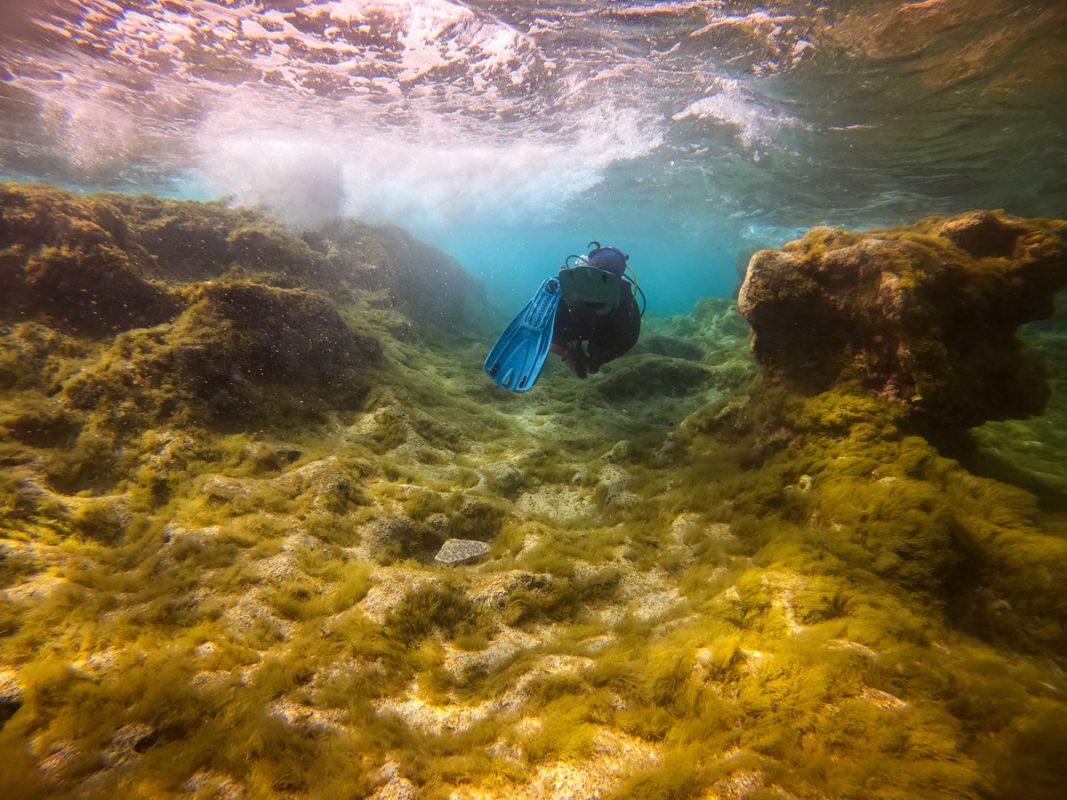
Jump into the waters around Malta, and you’ll encounter a colourful seascape with vibrant sea life, a Mediterranean reef and a multitude of historic shipwrecks.
With over 100 dive sites that range from beginner-friendly to advanced to technical, there’s something to challenge everyone in this South European island.
The most famous wreck dive is perhaps Um El Faroud, a Libyan oil tanker that was damaged nearby in 1998, and was then sunk to become a dive attraction. This advanced dive sits at depths of up to 36 metres, although parts are at 15 metres.
P21 and Tugboat Rozi are other mesmerising wreck dives; I had the chance to see both of these during my day’s diving.
While the Med isn’t as famous for its sea life as other dive spots around the world, there are plenty of aquatic animals to look out for when you’re in the sea around Malta.
Octopus, colourful fish, eels and even dolphins are just some of the marine animals you may see when you’re under the water.
Reasons to dive in Malta in April
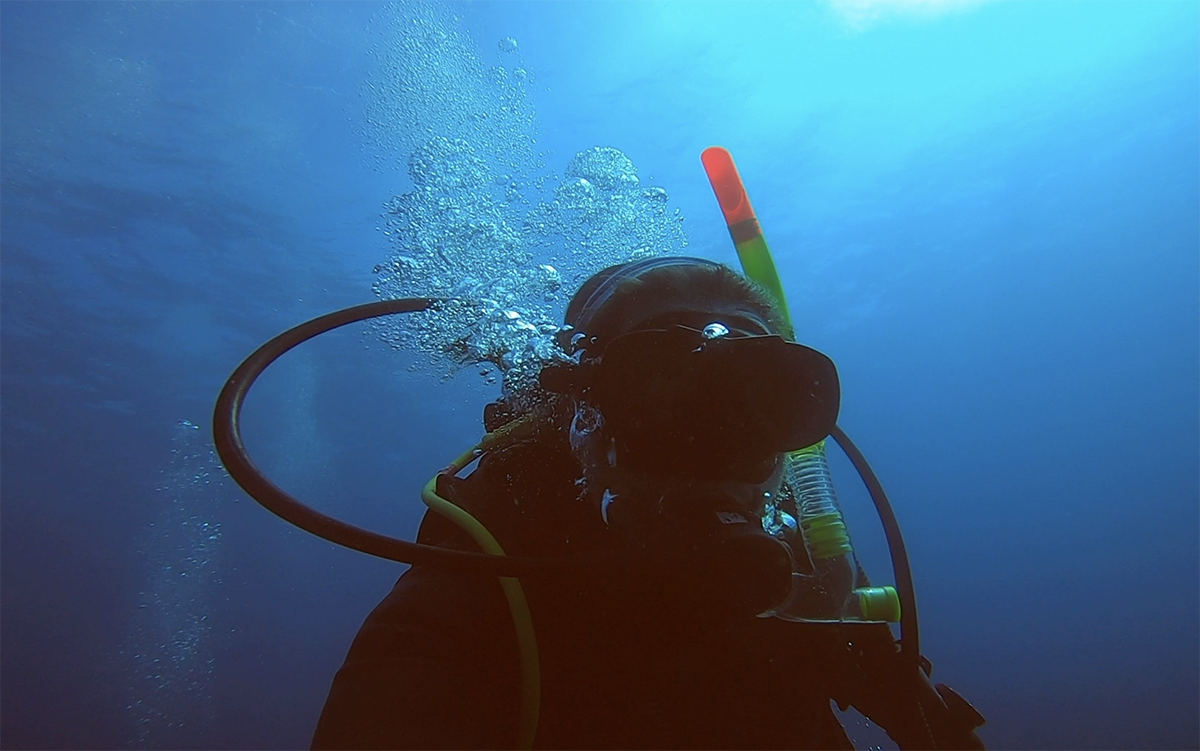
So, why dive in Malta in April?
If you happen to be in the Mediterranean country during this season, then that’s reason enough to dive.
For me, the cons gave me absolutely no reason to not dive, and as it was the only time that I was in Malta, I knew I definitely wanted to jump in as soon as I could!
But a big benefit of diving in Malta in April is that the seas will be very quiet – you’ll usually have the wrecks and reefs to yourself (with your diving group, of course) which leads to a much more relaxed diving experience.
Plus, while the water is colder in April than other times of the year, you’re in one of the best destinations for winter sun in Europe – and it’s never too cold in Malta!
Cons of diving in Malta in April
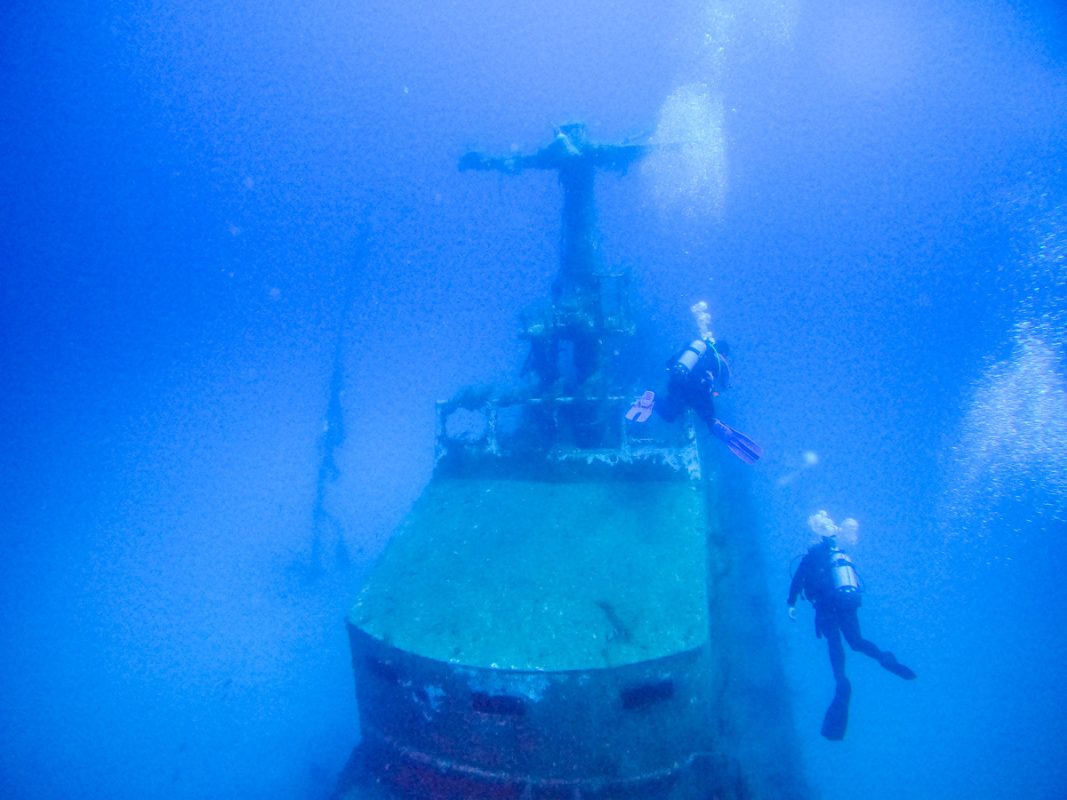
The main concern that most people have when diving Malta in April (or anytime in winter – or in March!) is the sea temperature.
It’s a fair concern – the water plummets down to around 14°C in the winter months, heating up only marginally to around 16-18°C in April.
However, this is still warmer than many dive destinations around the world, and you’ll be kitted up with plenty of warm diving gear to ensure that you don’t feel the cold too much.
Another con of diving in Malta out of season is that some dive sites are inaccessible, thanks to the rough waters between Malta and Gozo.
I experienced these when I did a day trip to Gozo, and they’re definitely worth avoiding (a lot of people on my boat were sick!).
But if it’s your first time diving in Malta, this shouldn’t be an issue – there are plenty of fantastic shore dives around the island, such as the Cirwenna dive sites, which we did!
Gear for diving in Malta in April

I wore a 5mm wetsuit with no arms, and then on top put on a long-sleeved 5mm shorty.
So my body and upper legs had 10mm thickness, and my arms and lower legs had 5mm.
Somebody in my group was wearing a dry suit – but you can only really wear these if you’ve had the training as it can affect your buoyancy (and usually, people who wear dry suits will have their own!).
Shore dives in Malta
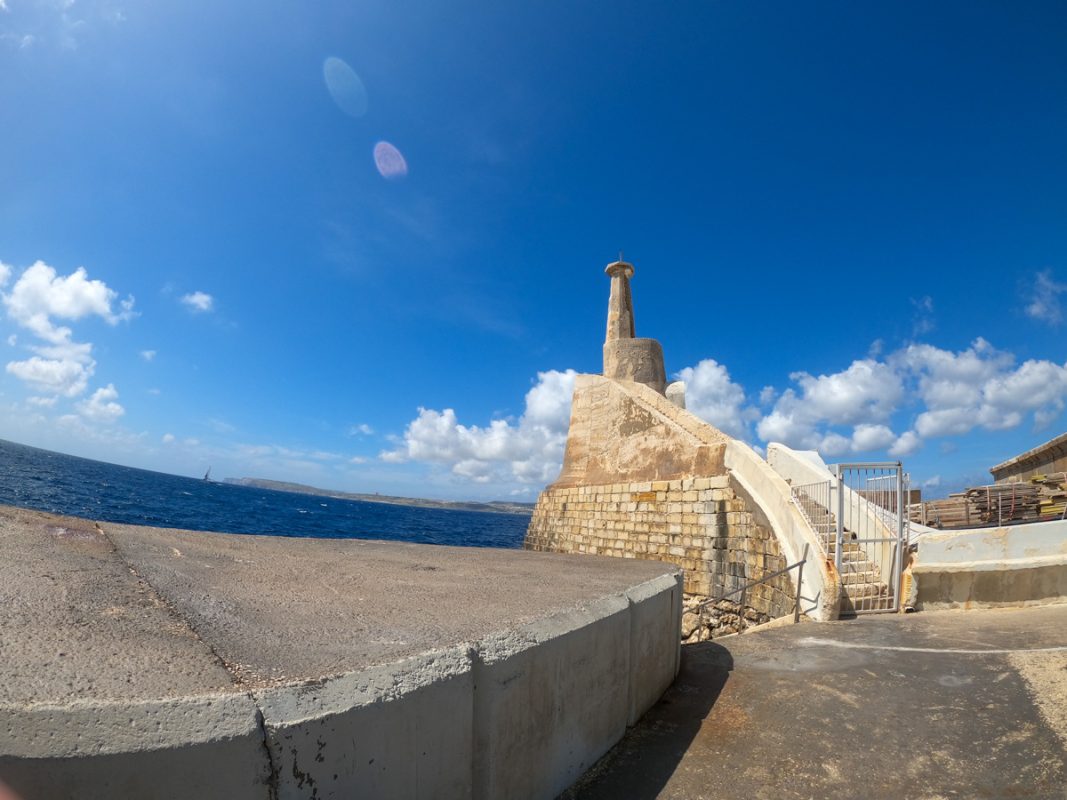
“We only really do shore dives during the winter” Piotr explained as we drove towards the Cirkewwa dive sites, which are opposite the Gozo ferry.
“This is because it costs to charter a boat, and we don’t have as big groups out of season. And the waters are still a bit rough – sometimes they’re too rough to go out, or even if they’re safe to go out in, they can still cause seasickness!”
Due to this, most dives in Malta in the winter (which is usually until May) are shore dives.
It was only my second time doing a shore dive – and my first time was at a lake – so I wasn’t too sure what to expect!
Cirkewwa dive sites
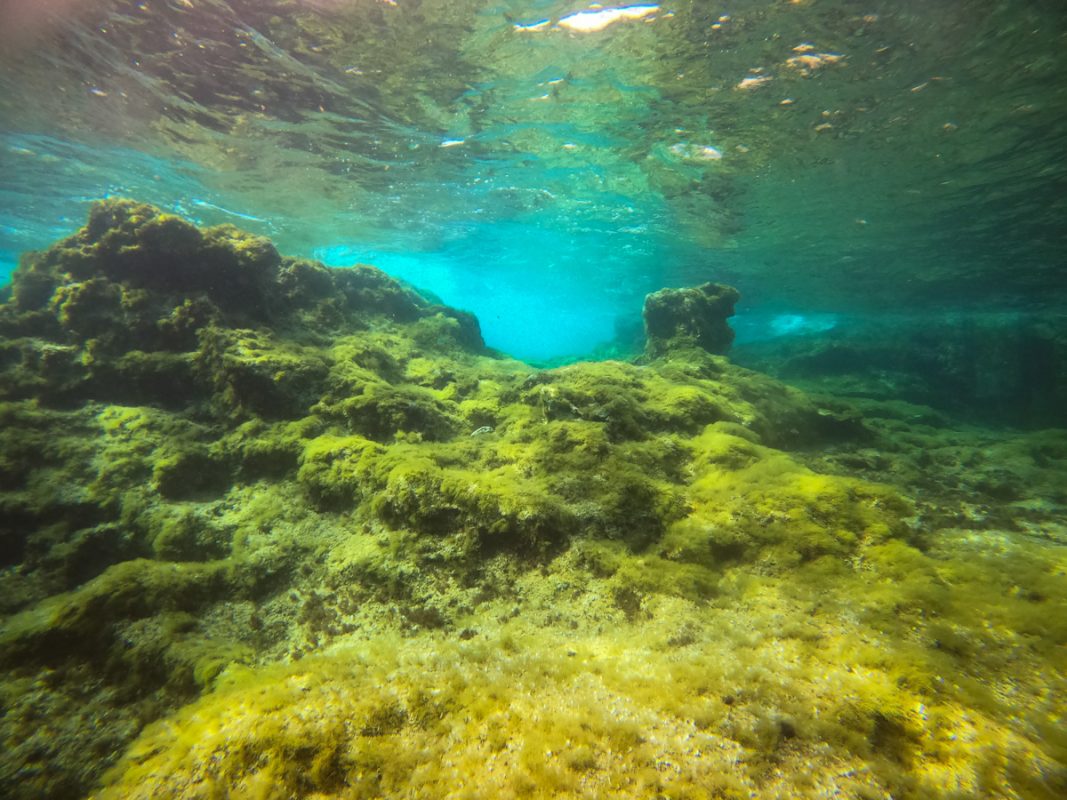
The Cirkewwa dive site is a collection of four individual dive sites and three entry/ exit points.
From each entry point, you can descend and make your way to either Tugboat Rozi, P 29, Cirwenna Arch or Sugar Loaf and Madonna.
We did three dives: Tugboat Rozi, P29 Patrol Boat and Cirwenna Arch.
Tugboat Rozi
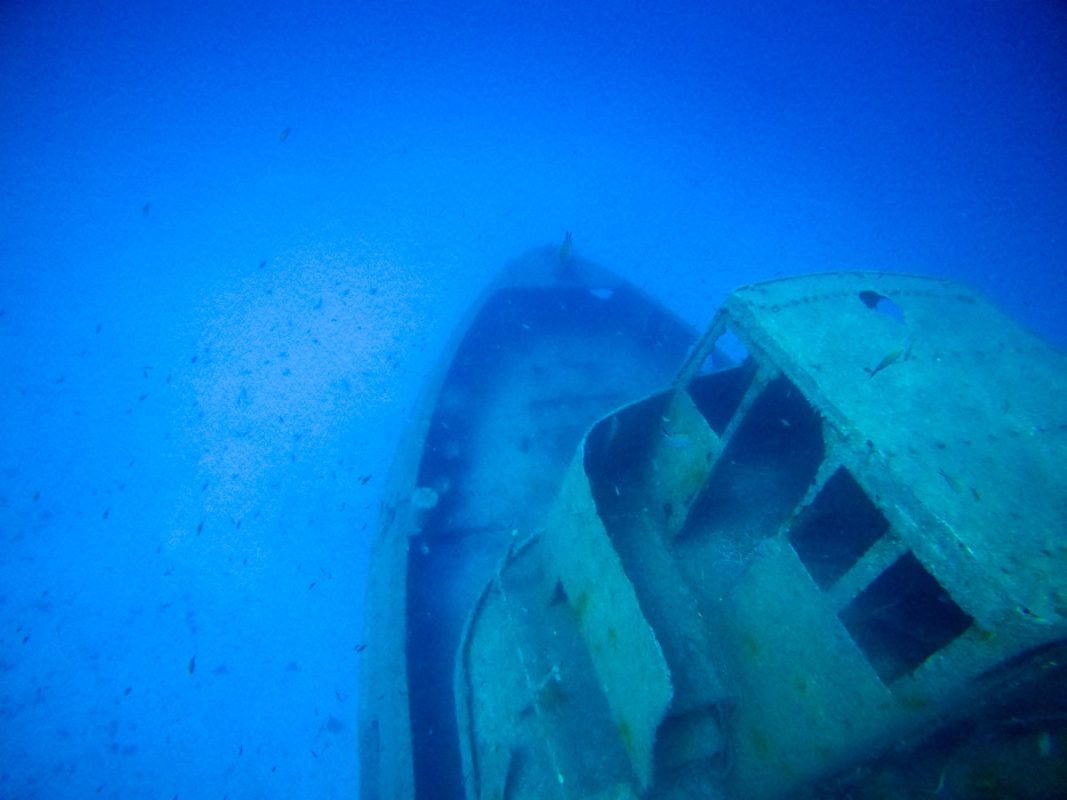
Descending down to 36 metres, Tugboat Rozi is an advanced dive sitting close to the reef in the Cirkewwa dive sites.
She was a tugboat that operated in the harbour of Valletta before she was scuttled in 1992 as an attraction for submarine tourists and divers. Nowadays, she’s home to an artificial reef.
The wreck is intact apart from the engine and propellor, and her proximity to the shore makes her an easy and interesting dive.
P29 Patrol Boat
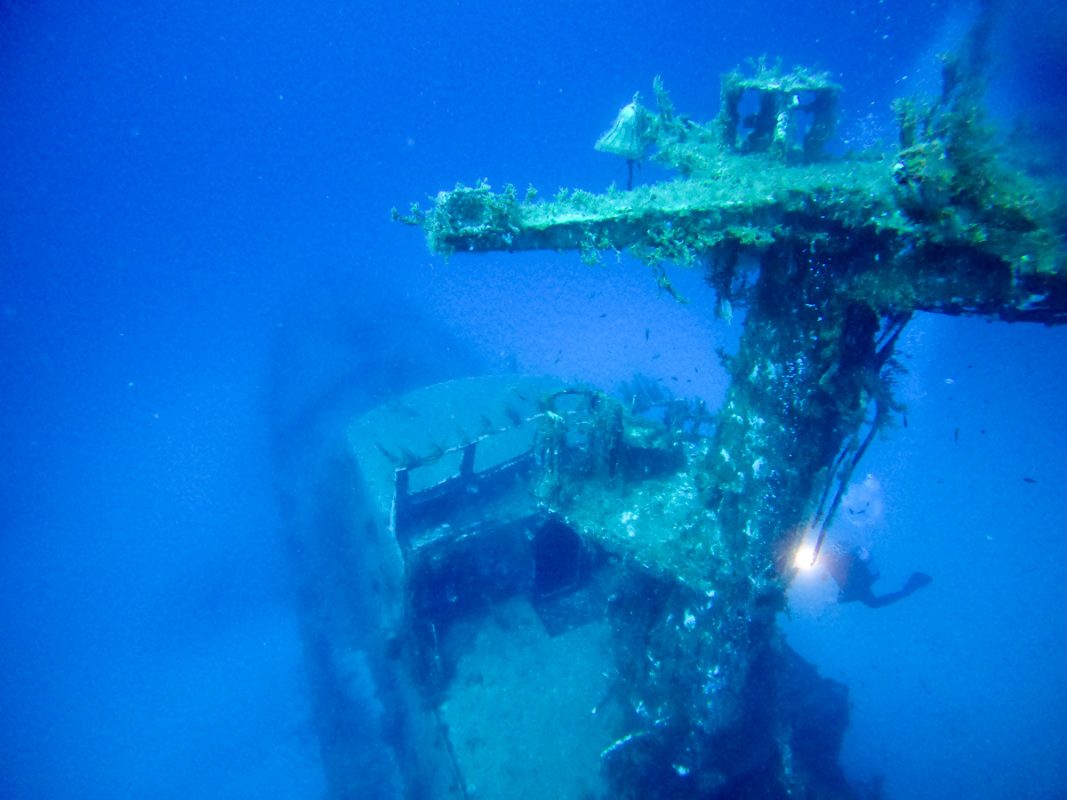
P29 is the other Cirkewwa wreck; a former patrol boat for the Maltese armed forces. She was originally built in East Germany and was sold to Malta in 1997, where she operated until 2004.
She was bought by the Malta Tourism Authority in 2005 and Like Rozi, she was scuttled (in 2007) to create a diving site – one of her sister boats, P30, has been scuttled off the coast of the Maltese island of Comino.
P29 is a little further from shore; it took us around eight minutes to swim (we stayed at around 5 metres to ensure we consumed as little air as possible).
Reef and marine life cover the outside of the boat, and there’s even a machine gun still on the deck! For experienced divers, there are some penetration opportunities. The maximum depth is 34 metres, although divers without a deep dive speciality can see most of the wreck at 30 metres.
Cirkewwa Arch
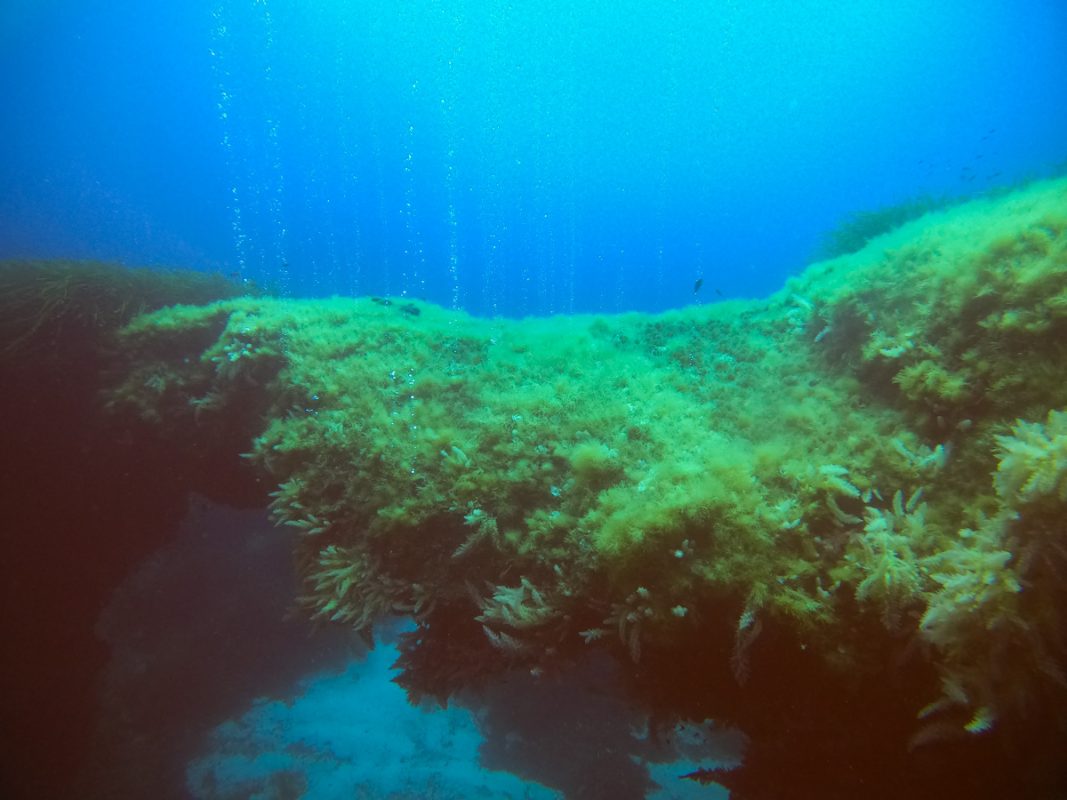
Wrecks over, it was time to see some of Malta’s marine life!
The Cirkewwa Arch is a rocky natural formation that sits at 12 – 20 metres. This part of the reef has lots of caverns, and the Cirkewwa Arch was formed when the roof of a cavern collapsed.
En route to the arch, there are plenty of caves to explore, with the chance of spotting eels, octopus and colourful fish. With clear water, it was possible to see for up to 20 metres!
This dive could be completed by somebody with an open water qualification – but as the wrecks are all deeper than 18 metres, it’s unlikely that anyone with less than advanced open water would go to the Cirkewwa Arch. However, there are plenty of other dive sites in Malta that are suitable for all levels!
Tips for diving in Malta
Bouycancy

If you’re used to diving in other oceans around the world, be mindful that you may need a different amount of weight in the Mediterranean.
(For anyone who hasn’t dived previously, when I say “weight” I’m talking about weight belts, which are part of diving gear and help divers achieve buoyancy when underwater).
I’d been diving in the Red Sea previously, and while I had up to 10 kilograms there, I found eight to be too many (even with a thicker wetsuit) and ultimately dived with 6 kilograms.
The right weight depends on water salinity, your weight and what kind of kit that you’re wearing – it’s very personal. Your dive shop will be able to advise, and you can check your buoyancy when you first jump in, but you may wish to adjust it throughout the day.
Follow safety procedures
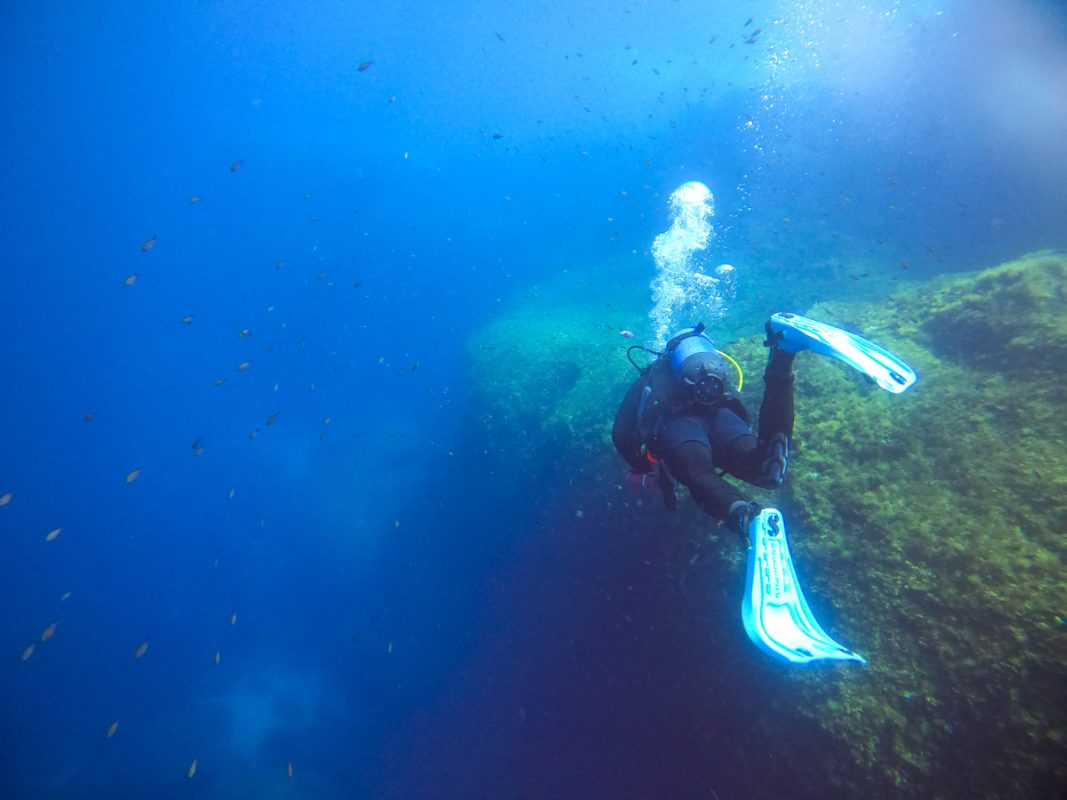
Malta is a very safe place to dive, largely because of all the procedures that are in place – for example, we had longer surface times than usual and it’s mandatory that all divers must go in the water with a snorkel.
However, Piotr told us that some divers can be too over-confident when diving in Malta; for example, experienced divers who aren’t going with a dive school may try to dive the Tugboat Rozi and P29 wrecks in one dive, which could cause them to run out of air, potentially not be able to do a decompression stop or resurface far away from the shore.
This isn’t typically an issue if you’re with a good diving school (like Diveshack), but it’s always important to be mindful of and respect their safety procedures!
Be mindful of currents
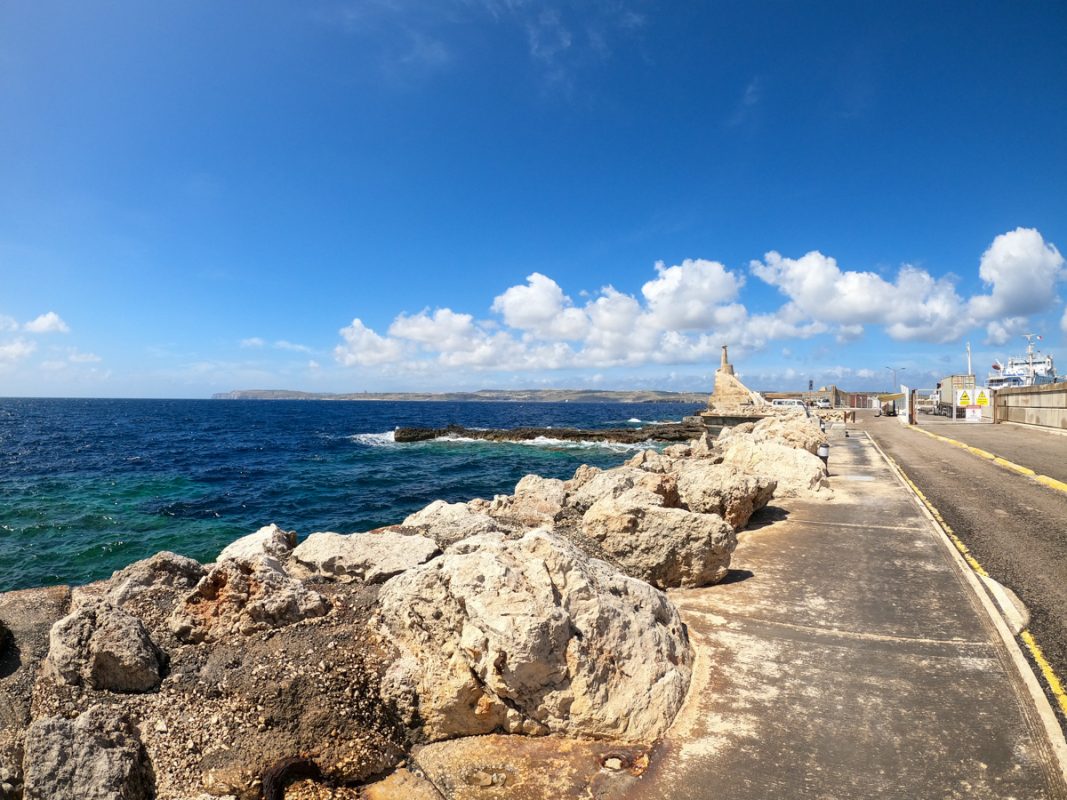
While Malta’s waters usually don’t have too much current, some of the shore entries can be a bit choppy – particularly in the winter (which April technically is!).
This doesn’t usually pose too much of a problem, but do be ready to jump into the water and then descend straight away.
On my first dive, I tried to defog my mask at the start of the dive, which was challenging, to say the least in the choppy waters!
On my second and third dives, I made sure I defogged the mask in advance and the entry was a lot more relaxed.
Dive for more than one day if possible
If you have time on your trip to Malta, I definitely recommend spending two or three days diving.
There are so many incredible dive sites around the island, and the more days you spend in the water, the more confident you’ll feel, meaning that by your last day of diving, you’ll hopefully be fully relaxed and able to enjoy the underwater world to your heart’s content!
Diveshack diving school
I completed my dives with Diveshack diving centre.
A Sliema-based school, they were professional, friendly and helpful, with all the necessary gear to stay warm in the cooler April waters.
The day of diving included transport to the sites and an instructor, and I also had gear (although I believe the rate is cheaper if you don’t have gear!).
They’re very safety conscious, ensuring that surface time is sufficient to avoid any risk of decompression sickness, and they had all the necessary gear including backups.
Our instructor, Piotr, was friendly and knowledgeable about diving.
They dive all over the island – chosen spots depend on the conditions and the level of the participants. Along with fun dives, they also offer training for all qualification levels.
Are you ready to dive into Malta?
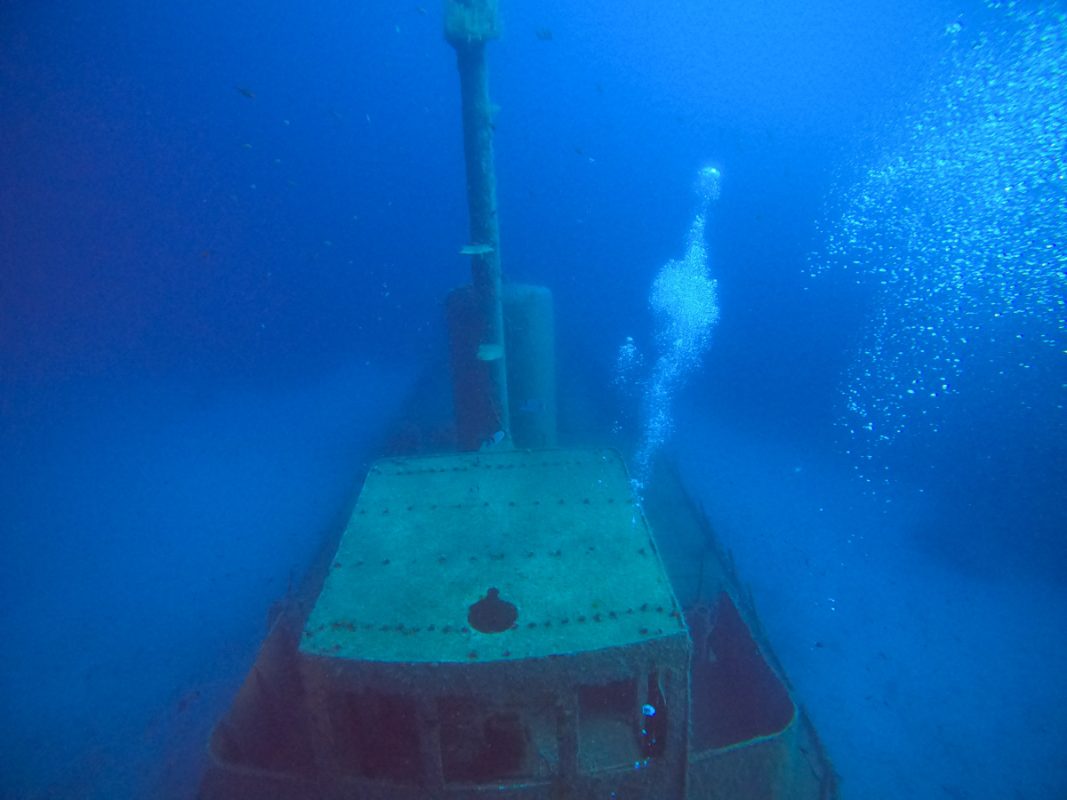
While diving may not immediately spring to mind when you’re thinking of winter activities in Malta, with the right gear and a knowledgeable school it’s definitely possible.
When I dived in April, the water was warming up a little but was definitely still on the chilly side – and the rough waters meant that only winter diving sites were accessible.
But as a first-time diver to Malta, it was well worth donning my two 5mm wetsuits for a day and venturing underneath the crashing waves to see the Mediterranean gems that lay below!

